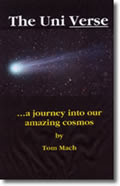 My interpretation of “Love Among the Ruins” (Robert Browning)
My interpretation of “Love Among the Ruins” (Robert Browning)by Tom Mach
©2009 by Tom Mach
I’ve always believed that poetry is a very special type of writing that forces readers to throw themselves into the poem and personalize it against their own attitudes, backgrounds, experiences, and prejudices. That’s why it’s not surprising to learn you can hand an identical poem to five poetry “experts” and come back with five different interpretations.
I’ve always enjoyed the poetry of 19th century British writers. One that from time to time has been somewhat enigmatic to me has been Robert Browning. Some of his thoughts are so obscure that it was rumored that even Mr. Browning, when asked about one of his poems, could not recall what it meant. A particular poem that has stayed with me ever since high school (eons ago) was a Browning poem called “Love Among the Ruins.” An artist named Edward Burne-Jones actually did a painting based on this poem, and it’s shown up there on this blog.
Here’s Browning’s “Love Among the Ruins”—
Where the quiet-coloured end of evening smiles,
Miles and miles
On the solitary pastures where our sheep
Half asleep
Tinkle homeward thor’ the twilight, stray or stop
As they crop—
Was the site once of a city great and gay,
(So they say)
Of our country’s very capital, its prince
Ages since
Held his cour in gathered councils, wielding far
Pear or War.
Oh heart! oh blood that freezes, blood that burns!
Earth’s returns
For whole centuries of folly, noise and sin!
Shut them in,
With their triumphs and their glories and the rest!
Love is best.
When I first read this poem I fell in love with cadence and the delightful juxtaposition of words, such as “blood that freezes, blood that burns” or “for whole centuries of folly, noise and sin! Shut them in.” But as I read it over and over, pictures flashed through my mind—not necessarily Robert Browning’s pictures, but my own. Let’s take a few examples:
“Where the quiet-coloured end of evening smiles, Miles and Miles.”
I visualize those evenings on a Hawaiian beach where your can almost see the curvature of the earth as the golden sun’s smile begins to sink into the Pacific.
“Where our sheep half asleep tinkle homeward through the twilight.”
Instead of sheep, I visualize cattle on a Kansas landscape. The cattle have finished grazing and stand still, almost statuesque-like. Perhaps they are already half-asleep.
“Was the site once of a city grat and gay (So they say) of our country’s very capital.”
I’m thinking about Washington, DC Will our nation’s capital someday sit in ruins because of the evil in the world that would like us destroyed?
“Oh heart! oh blood that freezes, blood that burns! Earth returns”
Freezing blood reminds me of people who have become cold and heartless while blood hat burns reminds me of riots where people will kill each other to force their will on others. Hopefully, though Earth will return to sanity.
--Anyway, those are my thoughts. As I say, everyone interprets poetry differently. That’s why it is such a terrific medium of communication.

3 comments:
That poem brings back fond memories of a poetry class I had in college.
I, too, like the juxtaposition of words.
Thanks Tom.
Peggy
Good blog. I've always liked Robert Browning, enigmatic though he often is. His My Last Duchess inspired me to write a poem called My Last Mother, which is about my last stepmother (I had two). Keep the thoughts coming, Tom.
Pat Marcantel
Harvestworker
Excellent blog- credible and intriguing. I enjoyed your interpretaton. I look forward to visiting again.
~Olive
Post a Comment